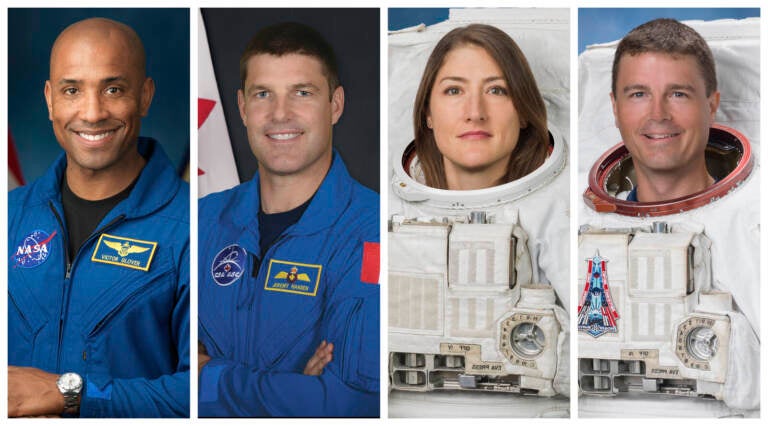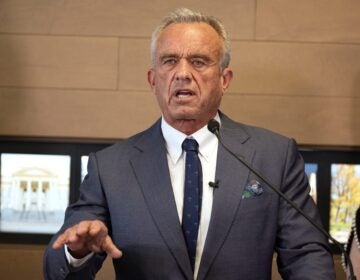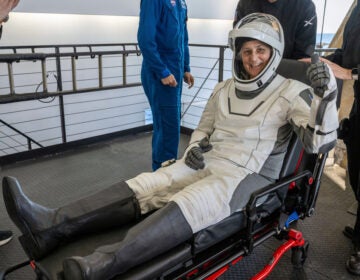These are the 4 astronauts who’ll take a trip around the moon next year

This combination of photos shows (from left) astronauts Victor Glover, Jeremy Hansen, Christina Koch, and Reid Wiseman. (NASA, CSA via AP)
NASA and the Canadian Space Agency have announced the names of the four astronauts who will travel on a spaceflight around the Moon next year.
The group will fly aboard NASA’s Orion spacecraft as part of the Artemis program, which aims to return astronauts to the surface of the Moon for the first time in more than 50 years, establish a long-term presence on the lunar surface and eventually put humans on Mars.
The four-person crew will include NASA astronauts Christina Hammock Koch, Victor Glover and Reid Wiseman as well as Canadian astronaut Jeremy Hansen.
“We have a lot to celebrate, and it’s so much more than the four names that have been announced. We need to celebrate this moment in human history,” said Glover, Artemis II’s pilot, during a Monday morning event to announce the crew. “Artemis II is more than a mission to the Moon and back. It’s more than a mission that has to happen before we send people to the surface of the Moon. It is the next step on the journey that gets humanity to Mars.”
Wiseman and Glover both have taken flights to the International Space Station, and were both captains in the U.S. Navy. Koch was an engineer and a scientific field worker before becoming an astronaut, and her 328-day stint in space set a record for the longest single spaceflight by a woman. Hansen, an astronaut with the Canadian Space Agency, served as a fighter pilot in the Royal Canadian Air Force.
The mission will be the second phase of NASA’s Artemis program. Artemis I occurred last year, when NASA launched the uncrewed Orion on a test mission to space in November, sending the ship around the Moon and back on a 1.4-million-mile journey that lasted 25 and a half days. The goal of that mission was to test the new Artemis rocket and spacecraft ahead of a crewed flight.
NASA associate administrator Robert D. Cabana said after the Orion splashed down safely in December that the spacecraft performed “flawlessly” despite a few minor glitches. Officials had scuttled the scheduled launch of Artemis I several times over technical problems, including a hydrogen leak, as well as severe weather.
With the test flight finally under Orion’s belt and its first crew named, space program officials are preparing for the second phase of Artemis, which is scheduled to take place in 2024. The four astronauts will embark on a roughly 10-day mission around the Moon and back without landing on the lunar surface.
President Biden called the crew members to offer his thanks and tell them he was proud of the mission they were set to embark on.
“The world just is, just holds their breath when things like this happen,” Biden said. “And I know you know it, but the work you’re doing is going to inspire countless people around our country and the world.”
The final phase of the Artemis project, Artemis III, will put astronauts on the Moon once again — but no sooner than 2025. The last time NASA astronauts walked on the Moon was during the Apollo 17 mission in 1972.
Officials say Artemis III also will land the first woman and the first person of color on the lunar surface.
As part of the program, NASA hopes to build a base camp on the Moon that would include a lunar cabin, a rover and a mobile home and allow astronauts to stay there for up to two months at a time to conduct future research.
According to NASA’s Office of Inspector General, each Orion spaceflight will cost more than $4 billion, and the overall cost of the Artemis program through the 2025 fiscal year will reach $93 billion.
A series of other countries have signed onto an agreement known as the Artemis Accords with NASA that lays out shared principles underpinning future space exploration, including Australia, Japan, the United Arab Emirates and the United Kingdom.
9(MDAzMzI1ODY3MDEyMzkzOTE3NjIxNDg3MQ001))




